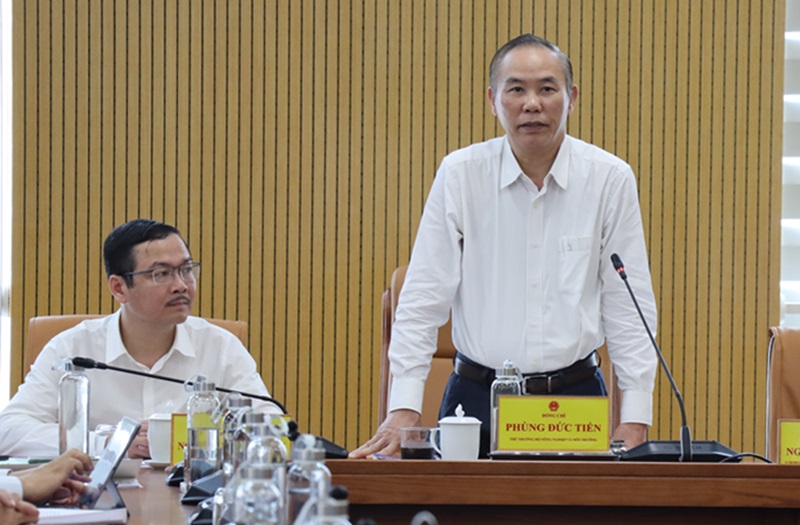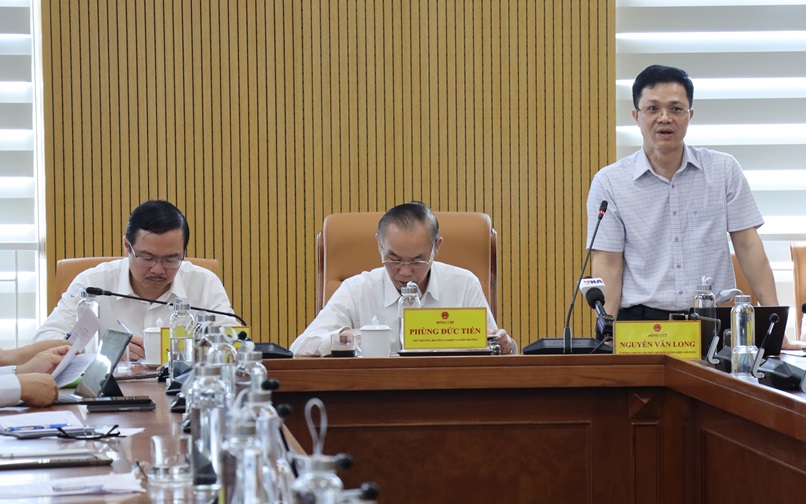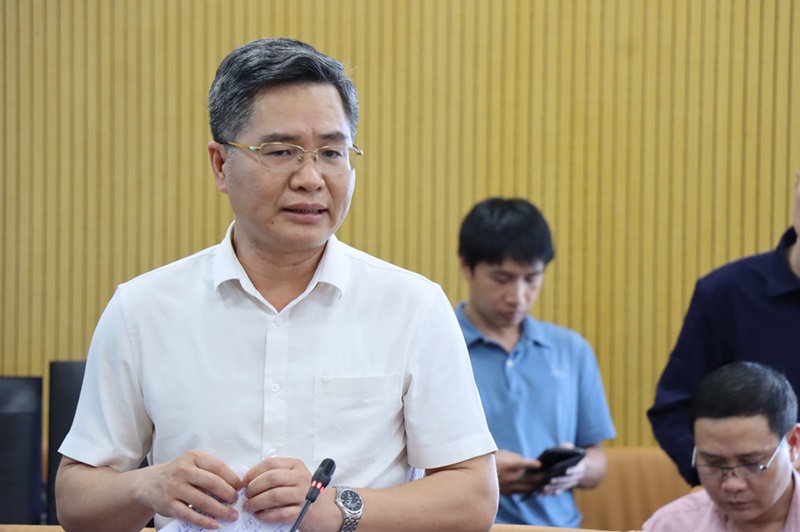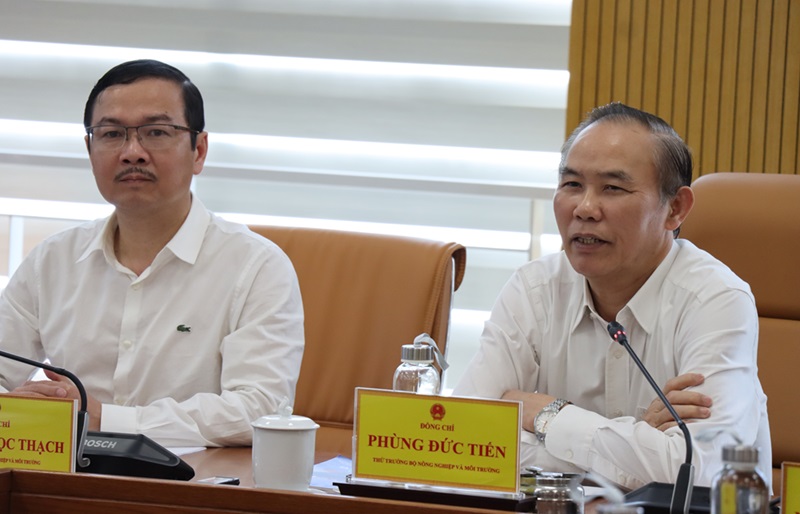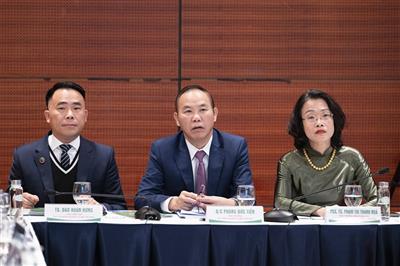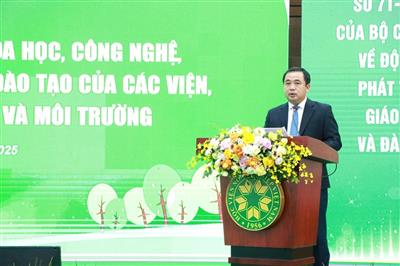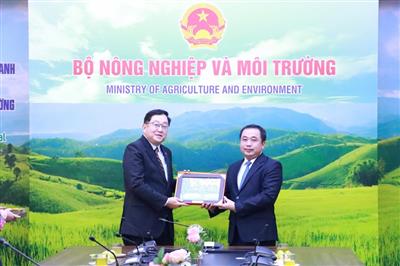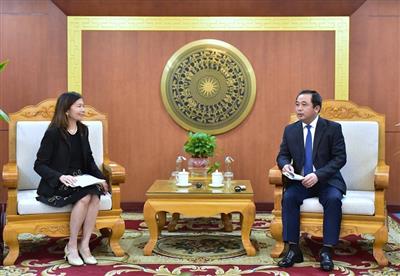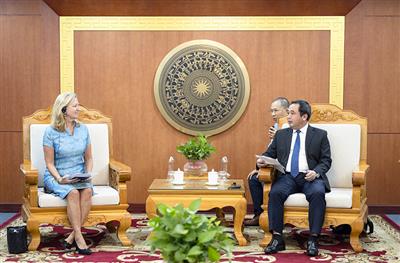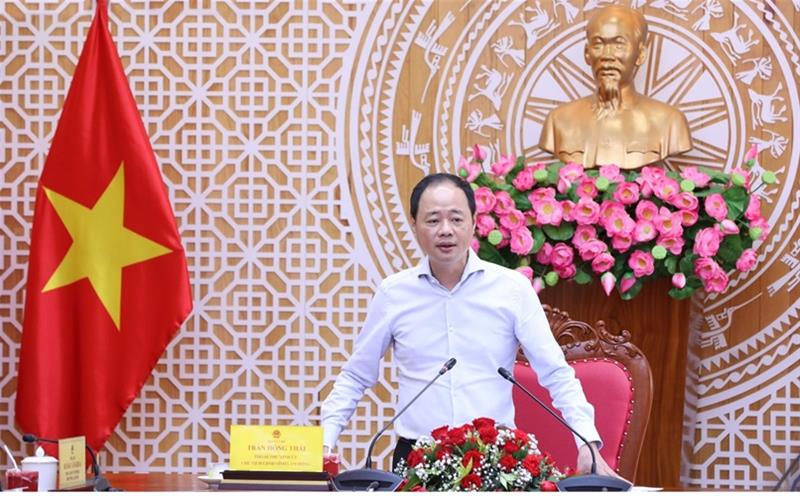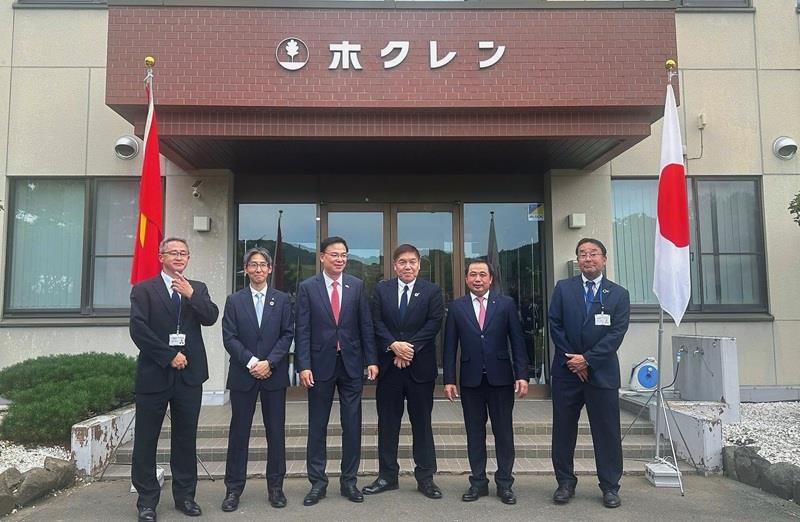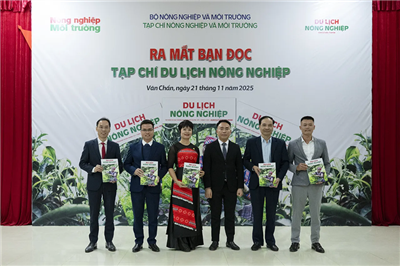
Towards breakthroughs in science and technology for agriculture and the environment: From innovation to action
05/05/2025TN&MTOn May 5 in Hanoi, the Ministry of Agriculture and Environment (MAE) held a press conference to introduce the upcoming National Conference on the Implementation of Resolution No. 57-NQ/TW issued by the Politburo. The event is expected to usher in a new era of breakthroughs in science, technology, innovation, and digital transformation. Chaired by Deputy Minister Phung Duc Tien, the press conference not only provided key details about the conference but also highlighted major institutional bottlenecks that must be addressed for science and technology to become a genuine strategic driver of the sector.
A national-level conference: Launching a strategic shift for the sector
Scheduled for May 10, 2025, at the Kinh Bac Cultural Center in Bac Ninh province, the conference is expected to gather between 450 and 500 delegates. This marks the first nationwide science and technology event organized by the Ministry of Agriculture and Environment, signaling a strong commitment to turning the Politburo’s vision for breakthroughs in science, innovation, and digital transformation into reality.
Deputy Minister Phung Duc Tien emphasizes the need for bold reforms in scientific management to unlock innovation potential across the sector
With four thematic sessions planned for the afternoon of May 10, the conference will not only assess the current status of science, innovation, and digital transformation in the sector but also propose strategic solutions aimed at bridging science with real-world production and enhancing the global competitiveness of Vietnamese agriculture in the new era.
According to Mr. Nguyen Van Long, Director of the Department of Science, Technology, and Environment, Resolution 57 represents a milestone in that it is the first time the Politburo has identified science, technology, and digital transformation as “top breakthrough areas” for national development. In response, the Ministry has issued an Action Plan under Decision No. 503/QD-BNNMT, focusing on seven priority tasks ranging from institutional reform and data infrastructure to investment in digital platforms and the development of high-quality human resources.
Institutional bottlenecks hampering the journey from lab to market
Speaking at the press conference, Deputy Minister Phung Duc Tien candidly pointed out numerous barriers that are stifling innovation and delaying the application of scientific research results.
First and foremost is the issue of human resources. The sector is facing a critical shortage of highly qualified experts, largely due to uncompetitive working conditions and inadequate incentives. The number of professors and PhDs is in decline, while the scientific labor market grows increasingly competitive.
The press conference marks a key step toward launching a strategic agenda on science, technology, and digital transformation in agriculture and the environment
Second is the cumbersome process of approving and evaluating scientific research. It can take up to five or six years to complete a single research project—a timeline that risks rendering the output obsolete by the time it is ready. The Deputy Minister cited the example of African swine fever vaccines, which would not have reached the market without the participation of private enterprises.
Another pressing issue lies in the misalignment of budget allocation between central and local levels. While local governments often lack qualified personnel to lead research projects, central agencies—home to Vietnam’s top scientists—struggle with limited financial resources. This results in fragmentation, inefficiencies, and underutilization of existing potential.
Restructuring science governance: The key to breakthroughs
“If we don’t dare to change, all our scientific potential will remain on paper,” said Deputy Minister Phung Duc Tien. He emphasized that fundamental reforms in governance—particularly the “three autonomies” in task selection, financing, and organizational structure—must be implemented in a more substantive way to unleash creative capacity across the research system.
Mr. Tran Gia Long, Deputy Director of Planning and Finance (MAE), said the Ministry issued Resolution 25 with 8 task groups to meet the 4% growth goal amid recent sectoral shifts
A notable proposal is the creation of a dedicated credit mechanism to support research groups in implementing innovative ideas. At the same time, the Ministry aims to address inefficiencies caused by fragmented investment in laboratory equipment. Many state-of-the-art labs are operating below capacity or are understaffed, leading to wasted research resources.
Additionally, giving research groups greater autonomy in applying and commercializing their scientific outputs is seen as a vital step to shorten the distance from the lab to the marketplace and improve the overall impact of research outcomes.
By 2030, the Ministry targets that over 90% of administrative procedures will be conducted online, paving the way for a fully digital government in agriculture and environmental management. International cooperation will also be intensified through bilateral and multilateral mechanisms to facilitate technology transfer and enhance domestic research capabilities.
A call to action for a dynamic innovation ecosystem
The Conference on the Implementation of Resolution No. 57-NQ/TW is not only a pivotal moment in the Ministry’s strategic planning—it is a rallying call for the entire sector to act in unison to build a dynamic, efficient, and sustainable innovation ecosystem.
To realize the vision of scientific and digital transformation, support is needed from all fronts: from a flexible regulatory environment and conducive institutional frameworks to individuals who dare to think boldly and act decisively. As Deputy Minister Phung Duc Tien stressed: “Science can only flourish when placed within the right mechanisms.” That, he noted, is the key to propelling Vietnamese agriculture to new heights in the digital era.
At the briefing, Deputy Minister Phung Duc Tien highlights institutional bottlenecks hindering the application of scientific research in agriculture and environment
The overarching message of the press conference was one of action—not only within the Ministry of Agriculture and Environment but across the broader society. Transforming governance thinking, reforming institutions, and placing trust in the scientific community will be essential to achieving the ambitious goals outlined in Resolution No. 57.
Deputy Minister Phung Duc Tien also called on the media to actively disseminate the messages of the upcoming conference, helping to ignite a genuine and lasting aspiration for impactful and sustainable scientific and technological development in agriculture and the environment.
Ngoc Huyen


